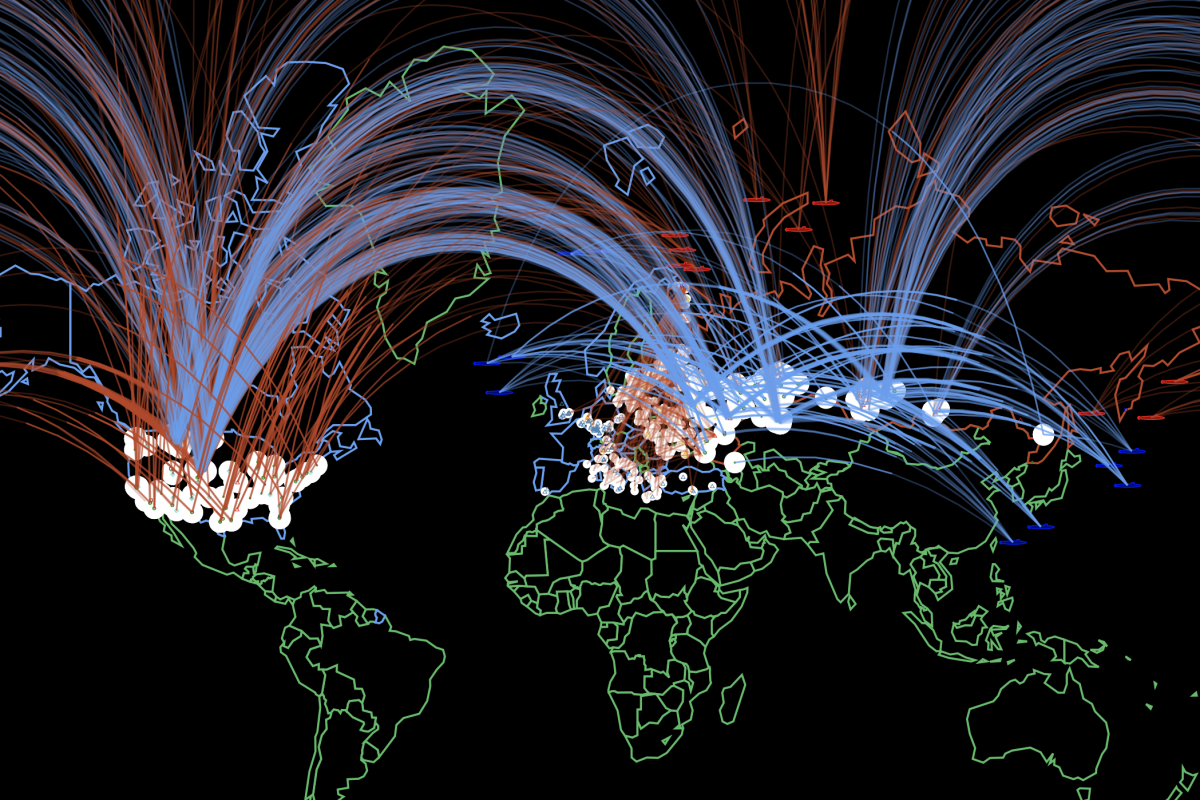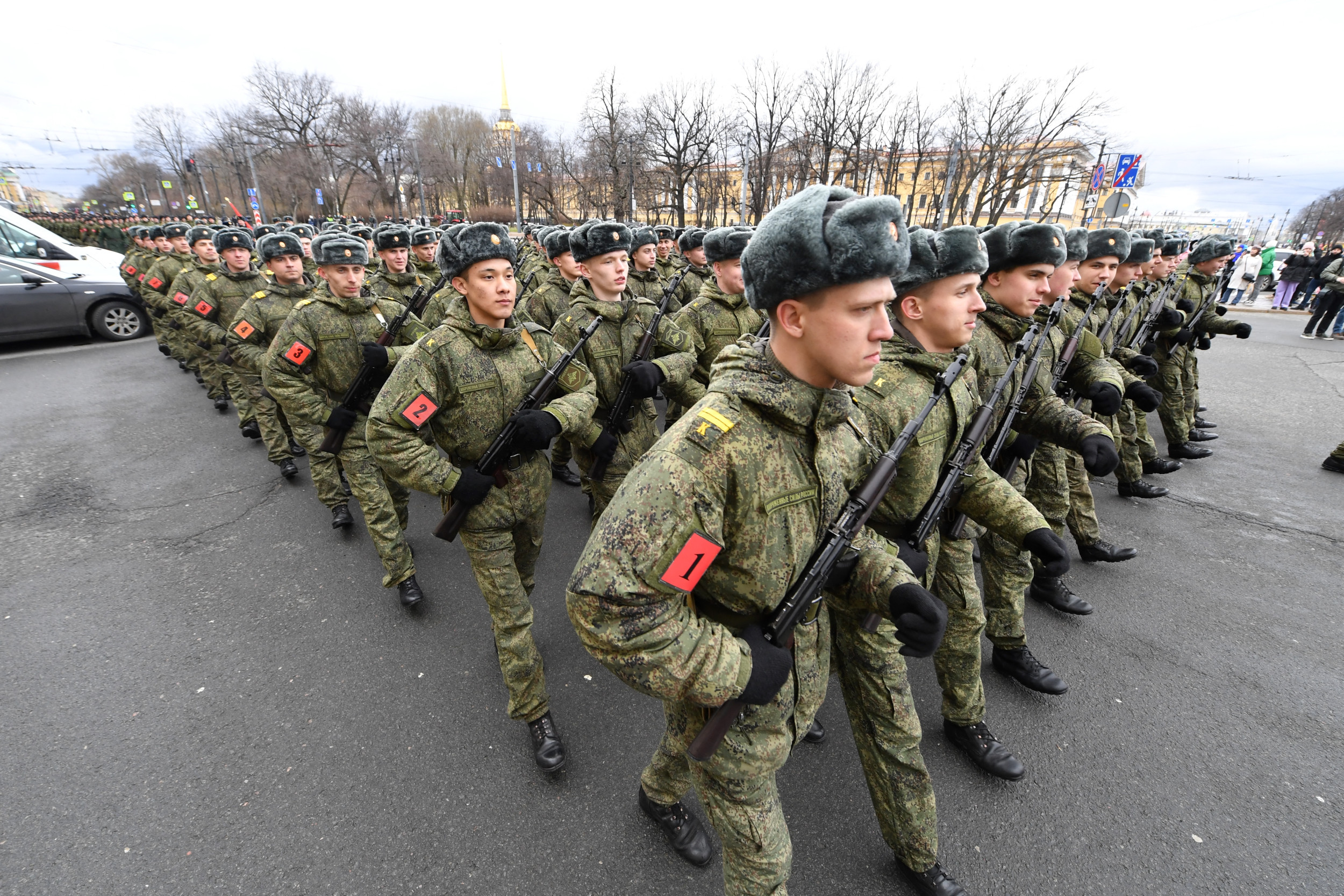A simulation shows how a nuclear war between Russia and NATO could potentially play out in a horrific scenario that would result in the deaths of millions of people around the world within hours.
The four-minute audiovisual piece called "Plan A", which was developed by researchers associated with Princeton University's Program on Science & Global Security (SGS), has seen renewed interest since Russia's full-scale invasion of Ukraine.
On February 24, Russian forces began advancing into Ukrainian territory across several fronts, marking a major escalation in a conflict that started in 2014.
While it is not clear if Russian President Vladimir Putin would ever go so far as to use nuclear weapons, the escalation of the conflict in Ukraine has led to a spike in discussions about the potential outbreak of nuclear war.

"As far as one can tell, this is the most serious crisis with a potential nuclear dimension involving Russia and the United States/NATO since the end of the Cold War, even if the risk of a nuclear war is still considered 'small'—as many analysts would argue," Alex Glaser, one the creators of Plan A, told Newsweek.
"A crisis like the one we are currently facing often results in miscommunication between parties, exacerbated by the fact that there remain very few active lines of communication between Russia and the U.S./NATO," said Glaser, who is an associate professor at Princeton's School of Public and International Affairs and Department of Mechanical and Aerospace Engineering.
Even prior to this year, Russia and the United States had been abandoning long-standing nuclear arms control treaties, commenced the development of new kinds of nuclear weapons, and expanded the range of circumstances in which these weapons might be used.
The Plan A simulation was originally prepared for an exhibition at Princeton's Bernstein Gallery in 2017 and was later made available to the public as a YouTube video in 2019. Its aim is to highlight the "potentially catastrophic" consequences of a nuclear war between Russia and NATO.
After an initial burst of interest in the video, the view count didn't increase much until late February 2022 when Russia invaded Ukraine and Putin made remarks alluding to the possible use of nuclear weapons, according to Glaser. Since then, the simulation has received more than a million views.
Plan A shows how a localized nuclear exchange could quickly escalate into a global catastrophe. The scenario shown in the piece is a plausible one based on the available evidence.
"Our team used independent assessments of current U.S. and Russian force postures, nuclear war plans, and nuclear weapons targets," Glaser said. "The simulation was also supported by data sets of the nuclear weapons currently deployed, weapon yields, and possible targets for particular weapons, as well as the order of battle estimating which weapons go to which targets in which order in which phase of the war to show the evolution of the nuclear conflict."
"Of course, we had no access whatsoever to classified information and often used 'simple' rules when allocating weapons to targets."
The immediate fatalities and casualties that would occur in each phase of the conflict are determined using data from NUKEMAP, an online tool that was developed by Alex Wellerstein at the Stevens Institute of Technology.
"It is estimated that there would be more than 90 million people dead and injured within the first few hours of the conflict," Glaser said. "The actual fatalities would be significantly increased by deaths occurring from the collapse of medical systems, as well as nuclear fallout and other long-term effects, including a possible global-scale nuclear winter."
The simulation begins in the context of a conventional conflict—Russia fires a warning shot from a base near the city of Kaliningrad in an attempt to stop a U.S./NATO advance. NATO then retaliates with a single, tactical, nuclear air strike.
The nuclear exchange quickly escalates in Europe with Russia sending 300 warheads via aircraft and short-range missiles to hit NATO bases and advancing troops.
With much of Europe destroyed, NATO launches around 600 warheads from U.S.-land and submarine-based missiles at Russian nuclear forces. Before its weapon systems are destroyed, Russia fires missiles launched from silos, road-mobile vehicles, and submarines.
In the final stage of the conflict, both Russia and NATO target the 30 most populated cities and economic centers of the other side—using 5-10 nuclear warheads on each depending on population size—in an attempt to inhibit the potential for recovery.
According to Glaser, a global thermonuclear war on this scale could certainly be considered a "worst-case scenario", although the title of the video hints at the fact that the sequence of events shown is simply part of the standard playbook.
"Once the nuclear threshold is crossed, it may be very difficult to prevent escalation to an all-out nuclear war, i.e., escalating from single use, to a tactical nuclear war in Europe, to a counterforce attack, and ultimately to a countervalue attack—targeting cities and economic centers with the aim of inhibiting the other side's recovery," Glaser said.
While it is possible, of course, that a nuclear exchange remains "limited" and the other side backs off or responds with conventional weapons only, there would be huge pressure on decision-makers to "respond in kind" and deny the side to strike first any advantage.
The consequences of a nuclear war for life on Earth would be "unimaginable", Glaser said.
"In addition to the immediate death and suffering and economic and societal collapse, in the years following the war, the phenomenon of nuclear winter would exacerbate the catastrophe," he said, pointing to one study which found that more than five billion people could eventually die from a nuclear conflict between the United States and Russia.
"I would not want to speculate how long it would take for humanity to recover," Glaser said.
Uncommon Knowledge
Newsweek is committed to challenging conventional wisdom and finding connections in the search for common ground.
Newsweek is committed to challenging conventional wisdom and finding connections in the search for common ground.
About the writer
Aristos is a Newsweek science reporter with the London, U.K., bureau. He reports on science and health topics, including; animal, ... Read more
To read how Newsweek uses AI as a newsroom tool, Click here.








